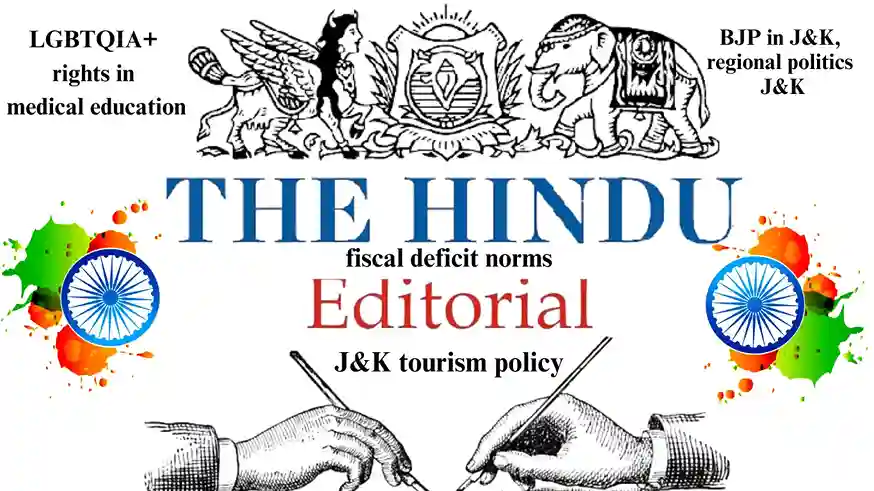Analysis of The Hindu Editorial 1: A tourism policy ill-suited for Jammu and Kashmir
Context
The delicate environment of Jammu and Kashmir is severely strained as a result of unsustainable tourism practices and the effects of growing commercialization. A sustainable tourist concept that can strike a balance between environmental preservation and economic growth is desperately needed in the area.
Introduction
Long regarded as a pristine refuge, Kashmir has experienced significant ecological deterioration that has been made worse by commercialization, urbanization, and the effects of climate change. Even though the area’s natural beauty continues to lure large numbers of visitors, the negative environmental effects of unrestrained tourism are becoming more and more obvious.
Effects of New Policy
- Environmental Concerns: The region’s ecological balance has been seriously strained by the flood of visitors brought on by the Jammu and Kashmir government’s new tourism program after 2020. Since 2020, more than four crore tourists have come, and 1.2 million came in the first half of 2024 alone.
- Increasing Environmental Pressures: The administration’s efforts to highlight the stability of the Valley have unintentionally caused serious ecological disruptions. Water contamination has gotten worse due to inadequate waste management, which has made the environmental degradation in the area worse.
- Pilgrimage Tourism Strain: The growth of pilgrimage tourism has resulted in garbage accumulation, deforestation, and unmanaged development, particularly in environmentally vulnerable locations like Pahalgam and the Trikuta ranges. This ecological stress is greater than what the area can handle and is similar to the unrestrained tourism that fueled the devastating floods of 2014.
- Unsustainable Infrastructure Development: Deforestation and habitat encroachment are results of the need for lodging, transportation, and recreational amenities. The increase in development has changed the terrain, hampered wildlife pathways, and accelerated soil erosion.
- Depletion of Local Resources: The demand for water and power has increased due to increased tourist activities, further taxing the region’s resources. Concerning groundwater depletion, local aquatic ecosystems have been damaged by the reliance on hydroelectric projects, despite their renewable nature.
- Water Scarcity and Agricultural Distress: The region is experiencing water scarcity as a result of rapid glacier depletion brought on by climate change. The Valley faces an impending agricultural dry spell, as declining river levels affect crop yields and irrigation. Both the region’s food security and farmers’ financial stability are in jeopardy.
Fragility of the Region
- Disaster-Prone: Earthquakes, floods, landslides, and avalanches are just a few of the natural disasters that can strike Jammu & Kashmir. Because the area is in an earthquake-prone zone, there are more dangers.
- 2014 Floods: Approximately five million people were impacted by the devastating floods that flooded most of the Valley, severely damaging infrastructure. The state suffered losses in the range of ₹15,400 crore to ₹25,700 crore.
- Unregulated Development Risks: Creating roads to improve access to newly discovered tourist attractions frequently upsets delicate ecosystems. The tragic landslide in Wayanad, Kerala, and the flash floods that will occur close to Amarnath in 2022 will serve as vivid reminders of the perils associated with unrestrained commercialization in ecologically delicate areas such as Kashmir.
Way Forward: The Need for a New Model
Even though tourism is still essential to Jammu and Kashmir’s economy, the region’s current unregulated commercialization model puts the ecosystem at grave risk. In order to protect the area’s delicate ecosystems and scenic splendor, a sustainable tourist approach is essential.
- Encouraging Eco-Friendly Practices: The goal of sustainable tourism should be to minimize the harm that it causes to the environment by implementing measures like trash reduction, water conservation, and biodiversity protection.
- Community Involvement: To guarantee that development is in line with environmental conservation objectives, local people must be involved in tourism planning and decision-making.
- Constructing Resilient Infrastructure: Structures must be built to endure harsh weather. It would be easier to distribute the environmental load and lessen the strain on delicate ecosystems if tourism offers were more diverse outside of peak seasons.
- Balancing Economic and Environmental Interests: To guarantee the region’s long-term ecological and economic viability, sustainable measures that safeguard both visitors and residents are crucial.
Conclusion
The state of Jammu and Kashmir’s environment makes a swift transition to sustainable tourism necessary. The area can preserve its natural beauty while making sure that tourism continues to be a significant source of income for future generations by implementing resilient, environmentally friendly practices and including local populations in decision-making. In this fragile region, this transition is essential to maintaining a balance between social fairness, environmental protection, and economic progress.
- Analysis of The Hindu Editorial – February 13, 2025
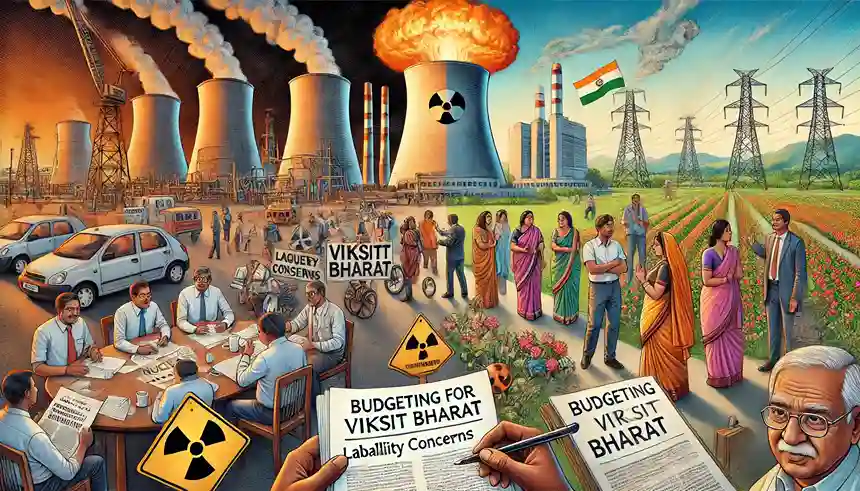
- Analysis of The Hindu Editorial – February 12, 2025
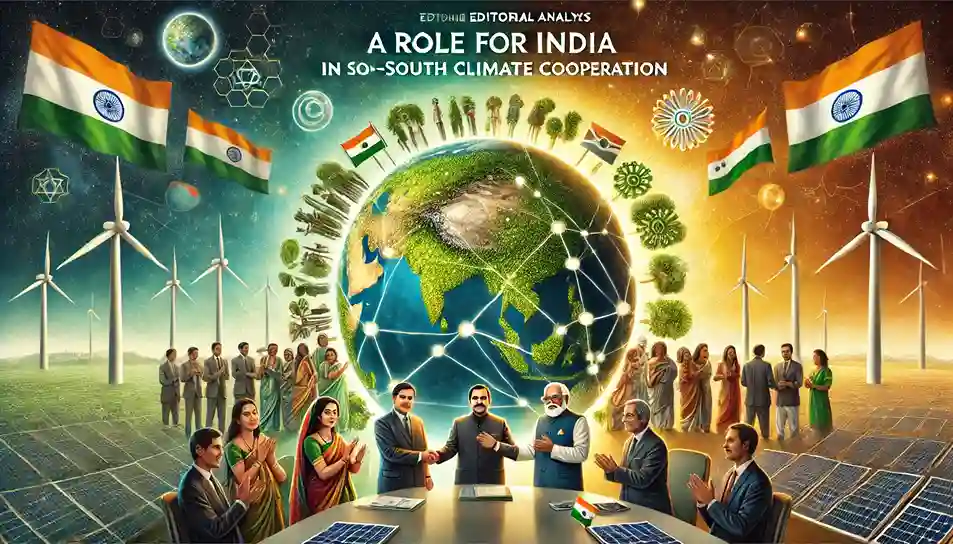
- Analysis of The Hindu Editorial – January 1, 2025
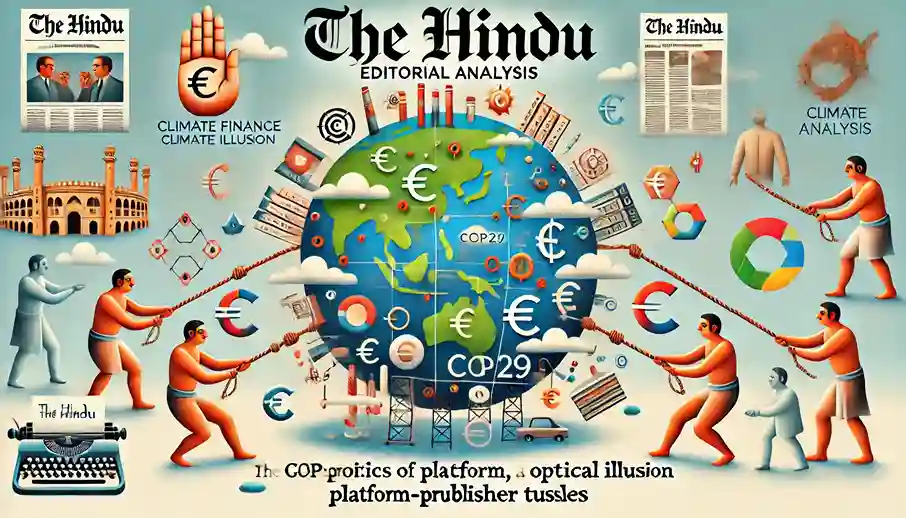
- Analysis of The Hindu Editorial – December 31, 2024
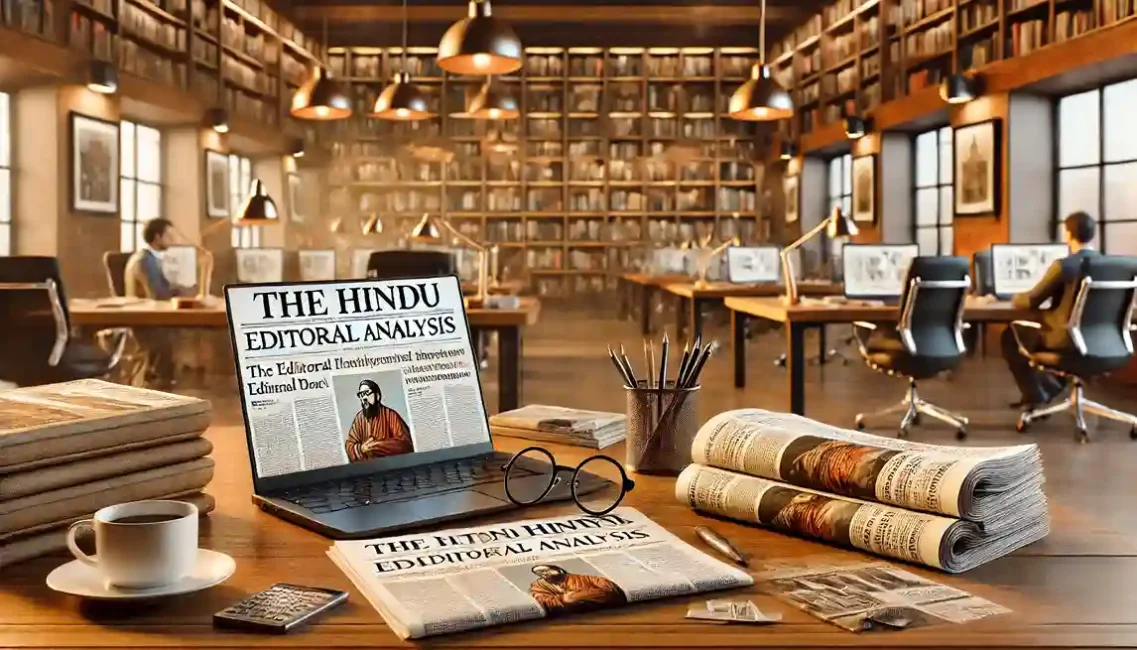
- Analysis of The Hindu Editorial – December 19, 2024

Analysis of The Hindu Editorial 2: Stick to fiscal deficit as the norm for fiscal prudence
Context:
With a 3% GDP fiscal deficit cap for prudent fiscal management, the current situation of diminishing consumer financial savings highlights the necessity for strict fiscal discipline.
Introduction
A substantial discrepancy between government revenue and expenditure might lead to serious economic problems. The 1980s saw a fragile balance of payments due to growing fiscal deficits and rising levels of public debt. The government was forced to borrow more money to fund development projects as a result, which increased the interest payment to revenue ratio and created fiscal fragility.
Key Budget Highlights:
- 2024–25 Budget Objectives:
- The Finance Minister wants to lower the fiscal deficit in 2026–2027 in order to guarantee a decrease in the amount of debt held by the federal government relative to GDP.
- The objective is to reduce the fiscal deficit from 4.9% of GDP in 2024–2025 to 4.5% by 2025–2026.
- The Debt-GDP Ratio of the Center:
- In 2025–2026, the debt-to-GDP ratio is expected to be 54%, assuming a 10.9% nominal GDP growth over the course of two years.
- Abandoning FRBM Targets:
- There has been an implicit abandonment of the Fiscal Responsibility and Budget Management (FRBM) 2018 target, which was to reduce the debt-to-GDP ratio of the central government to 40% and the combined government target to 60%.
- Even if the fiscal deficit stays at 4.5%, a declining debt-to-GDP ratio can be maintained with nominal GDP growth of 10% to 11%. The debt-to-GDP ratio might drop to 48% by 2048–2049.
- State Govt Objectives:
- States have set a 3% fiscal deficit-gross state domestic product (GSDP) objective under their Fiscal Responsibility Legislation (FRLs).
- Nevertheless, they might stray from this goal in favor of lowering their debt-to-GSDP ratios.
- Impact on Private Sector Investment:
- Unless the current account deficit rises above manageable levels, the private sector’s access to investable surplus will be restricted, with cumulative fiscal deficits averaging 7.5% of GDP.
Impact on Private Sector Investment:
- Twelfth Finance Commission’s Arguments: It proposed that investible surplus be made available to the private and non-public sectors in the event that household savings and foreign capital inflows surpass the government’s borrowing requirements.
- Declining Household Savings: Household savings, excluding 2020–21, decreased from 7.6% of GDP in prior years to 5.3% in 2022–2023. The combined budget deficit of the federal and state governments (7.5% of GDP) would completely absorb the available investible surplus at the existing levels of foreign capital inflow and savings, limiting access to the private sector unless savings increased.
The Link Between Fiscal Deficit and Debt-GDP Ratio:
- Arithmetic Relationship: The debt-to-GDP ratio and the fiscal deficit are directly correlated. Lowering the budget deficit is necessary to lower the debt-to-GDP ratio.
- Fiscal Responsibility Framework: India has been enacting laws pertaining to fiscal responsibility since 2003, which incorporate debt-to-GDP ratios and fiscal deficit targets for both the federal and state governments.
India’s Debt-GDP Scenario:
- High GDP-debt ratio: Increased interest payments from a high debt-to-GDP ratio can cut into the amount of money available for development spending.
- Centre’s Interest Payment to Revenue Receipts: The Center’s interest payment ratio increased from 35% in 2016–17 to an average of 38.4% in 2021–22 and 2023–24, which restricted money for non-interest expenses.
International Comparison:
- Debt-GDP and Interest Payments:
- The debt-to-GDP ratios of many industrialized countries, such as the US, the UK, and Japan, are larger than their revenue. However, interest payments are lower. For instance, between 2015 and 2019, Japan’s interest payment to revenue ratio was 5.5%, whereas India’s averaged 24% over same time.
- Policy Shortcomings:
- Despite highlighting the debt-to-GDP ratio as a major policy concern, India lacks specific goals or plans for reducing its debt. India’s debt-to-GDP ratio increased following the COVID-19 pandemic, rising from 50.7% in 2019–20 to 60.7% in 2020–21. It is yet uncertain how the country will return to pre-pandemic levels.
Conclusion:
In order to preserve fiscal stability in the current economic climate, the central government should judiciously stick to a 2% of GDP fiscal deficit limit. By decreasing the room for private investment and jeopardizing long-term economic sustainability, easing this regulation increases the risk of fiscal imprudence. To protect its financial stability going forward, the government needs to come up with a clear plan for achieving this deficit target.
Analysis of The Hindu Editorial 3: Undoing the undoing: On the Competency-Based Medical Education Curriculum guidelines
Context and Background
The National Medical Commission (NMC) of India recently withdrew the Competency-Based Medical Education (CBME) Curriculum guidelines. This is discussed in the article. Published on August 31, the guidelines included contentious language classifying transvestism (cross-dressing) as a “sexual perversion” and sodomy and lesbianism as “unnatural sexual offences.” Moreover, the updated curriculum did away with the requirement for disability competence. LGBTQIA+ and disability rights organizations staged large-scale demonstrations in response, which ultimately resulted in the guidelines’ withdrawal.
Key Issues
- Regressive Content in the Curriculum:
- The NMC’s rules propagated antiquated ideas about gender identity and sexual orientation; in particular, they called cross-dressing a “perversion” and sodomy and lesbianism “unnatural.” These classifications breach current legislation, such as the Transgender Persons (Protection of Rights) Act of 2019, and are not only unscientific but also discriminatory. Years of campaigning and advancement toward developing a more inclusive curriculum for medical students were undermined by this reversal.
- Violation of Disability Rights:
- The Rights of Persons with Disabilities Act, 2016, which requires the inclusion of disability rights in educational curricula, was violated by removing the foundation course’s required disability skills. The NMC adopted these skills in 2019 with the goal of assisting medical students in embracing a rights-based approach to providing healthcare to those with disabilities.
- Legal Violations and Disregard for Previous Guidelines:
- The NMC’s actions violated Indian laws intended to protect marginalized people as well as its own previous instructions from 2021, which were issued in response to warnings from the Madras and Kerala High Courts. This showed that the regulating body’s effort to reforming medical education was seriously lacking in coherence.
- Public Outcry and Protest:
- LGBTQIA+ and disability rights organizations fiercely opposed the NMC’s regressive amendments. With several groups threatening to write to the World Federation for Medical Education to suspend NMC’s recognition if the faults were not corrected, their complaints highlighted the seriousness of the decision. The immediate outcry from the public brought to light the widespread agreement regarding the significance of diversity in medical education.
Broader Implications
- Erosion of Trust:
- The incident called into question the government’s dedication to safeguarding underprivileged populations. The NMC undermined public confidence in the government’s ability to maintain gains gained in social justice and rights by supporting a curriculum that went against the law’s protections for LGBTQIA+ people and people with disabilities.
- The Importance of Inclusive Medical Education:
- Future healthcare providers’ attitudes and competencies are greatly influenced by their medical education. Healthcare workers will be prepared to provide fair and compassionate treatment to all patients, regardless of their gender identity, sexual orientation, or status as disabled, if their curriculum fosters inclusion.
- The Need for Vigilance in Curriculum Reforms:
- The general public and disadvantaged groups need to be on the lookout for changes to the curriculum that might undo the hard-won progress made in inclusion and rights-based education. Although the NMC’s decision to remove the divisive standards is a fleeting success, it emphasizes how crucial ongoing advocacy and supervision are.
Conclusion
The NMC’s decision to withdraw the updated Competency-Based Medical Education Curriculum is a necessary and appreciated corrective. The curriculum transgressed legal protections as well as fundamental inclusion ideals by taking a backwards attitude on LGBTQIA+ issues and excluding disability rights. This episode serves as a reminder of how brittle progress may be, especially when it comes to eradicating deeply ingrained prejudices in society. The public’s declining trust highlights the need for more consistent, progressive, and rights-based approaches to medical education reform, even though the immediate crisis has been avoided.
Analysis of The Hindu Editorial 4: Fresh openings: On the J&K Assembly elections
Context and Background
The article is about the impending Jammu and Kashmir (J&K) Assembly elections, which will be the first in ten years after the area lost its special status and statehood in 2019 due to Article 370. This election is important because it could be a watershed in the Union Territory’s history, which has seen decades of political turmoil and violence. There is a chance for political, social, and economic transformations through the election that could enhance the future of the area.
Key Issues
- The Legacy of Article 370 and Statehood:
- Removing J&K’s special status under Article 370 in 2019 is still a major election topic. In an apparent protest of the central government’s decision, regional parties like as the Peoples Democratic Party (PDP) and the National Conference (NC) have pledged to fight for the reinstatement of Article 370. On the other hand, the Bharatiya Janata Party (BJP) has categorically denied that the article may be reinstated and has charged regional parties of being pro-separatist. Local people who want more autonomy are pleased that the Congress has promised to restore J&K’s statehood, even though it has refrained from mentioning Article 370 directly.
- Record Candidate Participation:
- There are 529 candidates vying for 50 Assembly seats, which indicates a rise in political participation. The involvement of candidates from the Jamaat-e-Islami, a socioreligious group that has always supported separatist activities and abstained from elections, is one of the noteworthy shifts. Even separatists are getting involved in politics, which suggests that there may be a change in the political environment and that voting could provide a different route toward stability and peace.
- Political Dynamics and Key Parties:
- Several major political forces are competing in this election:
- Regional Parties: Propaganda against measures implemented after 2019 is being spearheaded by the NC, PDP, and J&K Peoples’ Conference (PSA).
- Congress: The Congress, which is supportive of the NC, is concentrating on worries about “outsiders” receiving employment, resources, and land. It is also suspicious of the Lieutenant Governor’s broad authority.
- BJP: The BJP has expanded its voter base outside the Jammu plains, attracting Scheduled Tribes (ST), Scheduled Castes (SC), and Other Backward Classes (OBC) people, especially the Pahari community, which just obtained ST classification. The BJP’s focus is on breaking the stranglehold of regional parties and building new leadership in J&K. In an effort to appeal to a wider audience, the party has also recruited Muslim candidates.
- Several major political forces are competing in this election:
- New Political Entrants:
- Separatist activity and that of the Jamaat-e-Islami signal a change in the political participation of groups that had previously rejected the electoral process. This may open up new political avenues for these organizations and encourage greater participation in regional government.
Broader Implications
- Shaping the Future of J&K:
- The outcome of the election may have a major impact on how J&K’s politics develop going forward. Depending on the outcome, the region can witness a rise in movements for regional autonomy or a new wave of political leaders who share the BJP’s agenda. Separatist organizations’ participation in the democratic process may provide a means of incorporating previously marginalized views and advancing regional peace and stability over the long run.
- BJP’s Growing Influence:
- The BJP’s ability to increase the number of its supporters, especially among minority groups like the Pahari community, shows that it is becoming more and more influential outside of its traditional bastions. The goal of the BJP is to establish itself as a broad-based party by running Muslim candidates and opposing the NC and PDP’s family-based politics. But this tactic might widen rifts within the electorate, especially on topics like revoking Article 370 and outside interference worries.
- Impact on Local Governance:
- The final election result may have a big effect on J&K’s governance. Many citizens believe that their political agency is restricted by their current position as Union Territories, and one of their main demands is the return of statehood, which is supported by the Congress and regional parties. In the future, the Assembly may be crucial in tackling topics that are now at the heart of the political debate, like resource distribution, employment opportunities, and land rights.
- Long-Term Peace and Stability:
- The electoral process has attracted groups formerly associated with separatism, indicating that elections could offer a pathway to enduring peace. These groups could help create a more stable political climate in J&K by interacting with democratic institutions, as long as their issues are resolved within the parameters of Indian democracy.
Conclusion
The future of the region is significantly promising, especially with the impending J&K Assembly election. The involvement of a wide range of political actors, including separatists, suggests that the election may mark a turning point in J&K’s political development even though Article 370 is still a divisive subject. New political dynamics may be evolving in the region, given the BJP’s growing influence and the high election turnout. This election is a critical chance for J&K to influence the direction of a more prosperous and harmonious future inside the Indian Union.

